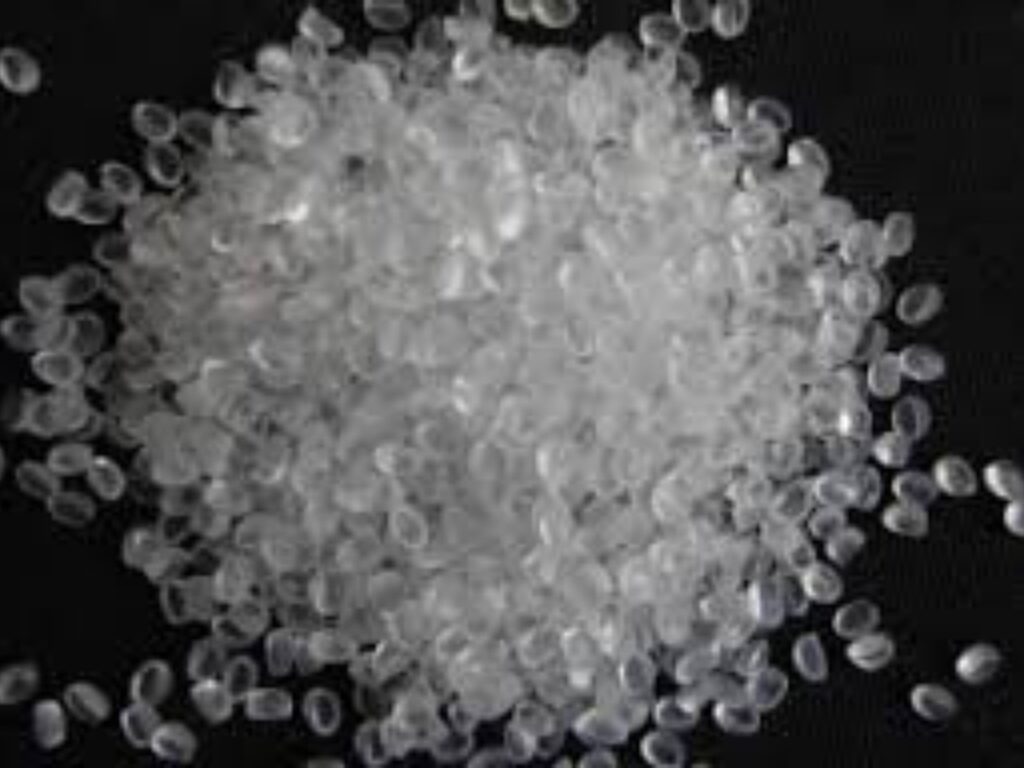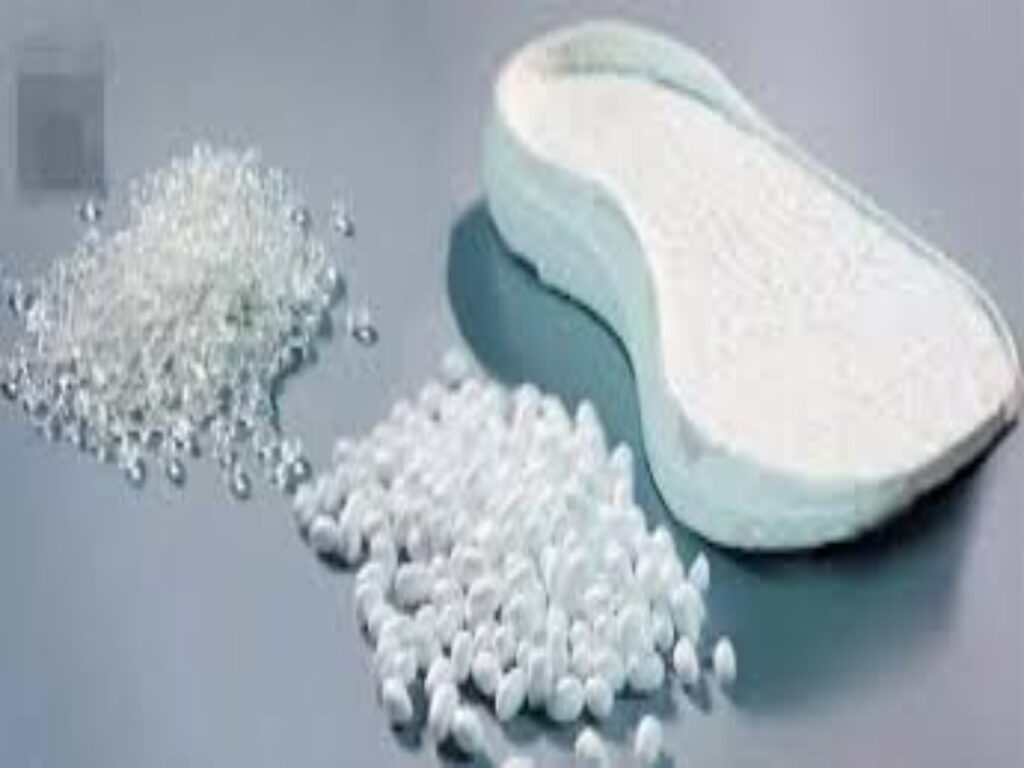In modern materials science and industrial applications, ethylene-vinyl acetate copolymer (EVA) and expanded thermoplastic polyurethane (ETPU) are two high-performance materials that have garnered significant attention.
They are widely used in a variety of applications, including footwear, sports equipment, packaging, and automotive parts.
This article provides a comprehensive comparison of these two materials to help you understand their characteristics, advantages and disadvantages, and applicable scenarios.
EVA (ethylene-vinyl acetate copolymer) is a lightweight, flexible, closed-cell foam material that has been widely used since the 1970s.
ETPU (expanded thermoplastic polyurethane), on the other hand, is a relatively new innovation known for its superior energy return and durability.
As materials technology continues to advance, understanding the differences between these two materials is crucial for product designers, engineers, and purchasing decision makers.
Material Basics: Chemical Structure and Manufacturing Process
EVA Chemical Properties and Production Process


EVA is made through the copolymerization of ethylene and vinyl acetate.
The vinyl acetate (VA) content typically ranges from 10% to 40%, with higher VA content resulting in greater flexibility and transparency.
EVA foam is produced by mixing a chemical blowing agent with EVA resin at high temperatures, followed by compression or injection molding.
The foaming process creates a large number of tiny, closed cells, which impart lightweight and cushioning properties to the material.
EVA is relatively simple and inexpensive to produce, contributing to its widespread adoption.
The hardness, density, and elasticity of EVA can be modified to meet specific application requirements by adjusting the VA content, blowing agent type, and processing parameters.
ETPU Chemical Composition and Manufacturing Technology

ETPU is an expanded microsphere material based on thermoplastic polyurethane (TPU).
TPU itself is a block copolymer composed of alternating hard segments (typically composed of diisocyanates and short-chain diols) and soft segments (typically composed of polyether or polyester polyols).
ETPU is produced by treating TPU pellets with a supercritical fluid (typically carbon dioxide or nitrogen) under high pressure and high temperature, followed by rapid decompression to expand the pellets into microspheres.
This “physical foaming” process produces a uniform, closed-cell structure, with each microsphere approximately 3-5 mm in diameter.
These microspheres can then be fused through hot pressing to form various shapes.
The manufacturing process for ETPU is more complex than that for EVA, requiring precise control of temperature and pressure parameters.
Physical Property Comparison: Hardness, Elasticity, and Durability
Density and Weight Properties
The typical density of EVA foam ranges from 0.05 to 0.3 g/cm³, depending on the degree of foaming.
This makes EVA products very lightweight and is one of the main reasons for its widespread use in footwear midsoles.
ETPU has a slightly higher density, generally ranging from 0.15 to 0.35 g/cm³, but its excellent elasticity allows for the use of less material while maintaining good performance.
In practical applications, ETPU products can often be 20-30% thinner than EVA products while providing the same cushioning performance, so the weight difference in the final product may not be noticeable.
However, for applications requiring extreme lightweighting, EVA may still have an advantage.
Hardness and Elasticity
The hardness of EVA is typically measured using the Shore C durometer, ranging from 20 to 80°C.
EVA with a lower hardness (20-40°C) is very soft and suitable for applications requiring high cushioning, while EVA with a higher hardness (50-80°C) provides better support and durability.
One drawback of EVA is that it gradually loses its elasticity after repeated compression, resulting in a “compaction” phenomenon.
ETPU has a similar hardness range to EVA, but its molecular structure gives it superior energy recovery properties (typically >60%, compared to 40-50% for EVA).
This means ETPU recovers its original shape more quickly after compression and maintains this performance over time.
Tests have shown that ETPU retains over 85% of its original properties after 100,000 compression cycles, while EVA may only retain 60-70%.
Tear and Abrasion Resistance
ETPU significantly outperforms EVA in terms of tear and abrasion resistance.
The TPU matrix inherently possesses excellent mechanical strength, and these properties are retained after expansion.
ETPU’s tear strength is typically 2-3 times that of EVA of similar density, making it superior in high-wear applications.
EVA is susceptible to surface wear and tear when exposed to abrasion and sharp objects over a long period of time.
While EVA’s abrasion resistance can be improved by adding modifiers, this increases cost and may affect other properties.
For applications requiring high durability, such as high-performance athletic shoe outsoles or industrial cushioning components, ETPU is often a better choice.
Comparison of Thermal Properties and Environmental Stability
Temperature Tolerance
ETPU is more stable than EVA in both high and low temperature environments.
The typical operating temperature range for ETPU is -40°C to +120°C, with short-term tolerances up to 150°C. EVA, on the other hand, becomes hard and brittle below -20°C and begins to soften and deform above 80°C.
This difference makes ETPU more suitable for extreme environment applications, such as winter sports equipment or components near the automotive engine compartment.
The heat deflection temperature (HDT) is an important measure of a material’s heat resistance under load.
ETPU’s HDT typically ranges from 70-100°C, depending on the formulation, while EVA’s HDT rarely exceeds 60°C. This means that ETPU products are better able to maintain their shape and performance in hot environments.
UV and Chemical Stability
The two materials also differ significantly in terms of weather resistance.
ETPU offers better UV resistance, resulting in less degradation after long-term outdoor exposure.
EVA tends to yellow and chalk under UV exposure unless specialized stabilizers are added. In terms of chemical stability, ETPU is more resistant to oils, greases, and many solvents, while EVA may swell or corrode with certain organic solvents.
ETPU is generally a more reliable choice for applications subject to chemical exposure or prolonged outdoor use, such as industrial gaskets or outdoor equipment components.
However, EVA tolerates water and most cleaning agents well, making it suitable for everyday consumer applications.
Retention of Low-Temperature Elasticity
ETPU significantly outperforms EVA in retaining its elasticity at low temperatures.
Testing has shown that at -20°C, ETPU retains approximately 80% of its room-temperature energy rebound, while EVA can drop below 50%.
This property makes ETPU an ideal material for winter sports equipment, such as ski boot liners or cushioning components in ice hockey equipment.
EVA becomes stiff in cold environments, significantly reducing its cushioning properties.
While special formulations can improve EVA’s low-temperature performance, this often increases cost and may compromise other properties.
Comparison of Processing and Manufacturing Techniques
Molding Process and Design Flexibility
EVA is relatively simple to process, primarily through compression molding or injection molding.
EVA particles are mixed with a blowing agent and then expanded in a high-temperature mold.
This process is mature and requires low equipment investment, making it suitable for large-scale production.
However, the shape complexity of EVA parts is limited, making fine structures difficult to achieve, and post-molding trimming is often required.
ETPU processing consists of two stages: first, the production of expanded microspheres, followed by hot compression molding of the microspheres.
While the initial investment is higher, ETPU molding offers greater design freedom, enabling the creation of parts with complex geometries and precise details.
ETPU microspheres can also be locally fused at different temperature zones, creating products with gradient properties.
Production Cycle Time and Efficiency
EVA molding cycles are typically short, typically between 3 and 5 minutes, depending on part thickness.
This makes EVA suitable for high-volume applications.
ETPU hot compression molding cycles are slightly longer, typically 5 to 10 minutes, due to the need to ensure complete fusion of the microspheres.
However, ETPU parts generally require no post-processing, while EVA parts may require flash trimming or surface treatment.
The production process for EVA is more straightforward from raw material to finished product, while ETPU requires microspheres to be prepared before molding, adding complexity to the supply chain.
ETPU offers advantages for small-batch, high-value products, while EVA offers higher production efficiency for large-scale, standardized products.
Waste Recycling and Sustainability
Each material has its own sustainability characteristics. While both EVA and ETPU are theoretically recyclable, practical challenges exist.
EVA waste can be ground and reused in lower-demand products, albeit with reduced performance.
ETPU recycling is more complex, but advanced processes can convert ETPU waste back into microspheres.
One environmental advantage of ETPU is its potentially longer lifespan, reducing the need for replacement.
Additionally, some ETPU formulations can utilize bio-based raw materials, further reducing environmental impact. EVA, due to its established recycling infrastructure, offers a greater sustainability advantage in some regions.
Application Areas and Cost-Benefit Analysis
Footwear Industry Application Comparison

In footwear, EVA has long been the preferred midsole material due to its lightness, low cost, and ease of processing.
Many basic athletic shoe brands still use EVA midsoles. However, high-end athletic shoes, such as the Adidas Boost series, are increasingly adopting ETPU.
ETPU provides longer-lasting cushioning and energy return, making it particularly suitable for high-performance sports such as running and basketball.
From a cost perspective, the raw material cost of an EVA midsole can be 30-50% lower than that of ETPU.
However, for high-end products, ETPU’s performance advantages justify its price premium. Some brands also adopt a hybrid approach, using ETPU in key areas and EVA in other areas to balance performance and cost.
Sports Equipment and Protective Equipment
ETPU is gradually replacing EVA in sports equipment, such as helmet liners, protective gear, and ball sports equipment.
ETPU’s excellent energy absorption properties provide improved impact protection while maintaining comfort.
For example, many new bicycle helmets use ETPU liners, offering equivalent or better protection in a thinner design.
For mass-market protective gear that needs frequent replacement, such as inexpensive yoga mats or children’s protective gear, EVA still dominates due to its significant price advantage.
However, professional-grade and high-end products are increasingly turning to ETPU solutions.
Industrial and Packaging Applications

In the industrial sector, EVA is widely used in packaging liners, seals, and shock absorbers, thanks to its favorable price-performance ratio and processing properties.
ETPU, on the other hand, is used in more demanding applications, such as precision instrument packaging and long-term industrial cushioning components.
ETPU’s oil and weather resistance make it suitable for automotive and mechanical engineering applications.
Packaging designers face a cost-performance trade-off: For single-use or short-term packaging, EVA is generally sufficient; for packaging systems that accommodate valuable items or require repeated use, ETPU offers a higher return on investment.
Some high-end electronics manufacturers have begun adopting ETPU packaging materials to provide better protection and enhance their brand image.
Conclusion: How to Choose the Right Material for Your Needs
EVA and ETPU each have their advantages and applications; neither is absolutely “better” or “worse.”
The choice depends on specific application requirements, budget constraints, and performance priorities.
When Choosing EVA:
Cost is a primary consideration
Requires an extremely lightweight solution
Short-term use or no need for long-term durability
Low-temperature performance requirements
Simple geometries and high-volume production
When Choosing ETPU:
High performance and durability are key requirements
Requires excellent energy return and long-term performance retention
Applications in extreme temperature environments
Complex designs and high precision requirements
Brand premium and product differentiation strategies
With advances in material technology, the performance gap between EVA and ETPU is narrowing, and hybrid solutions offer more possibilities.
